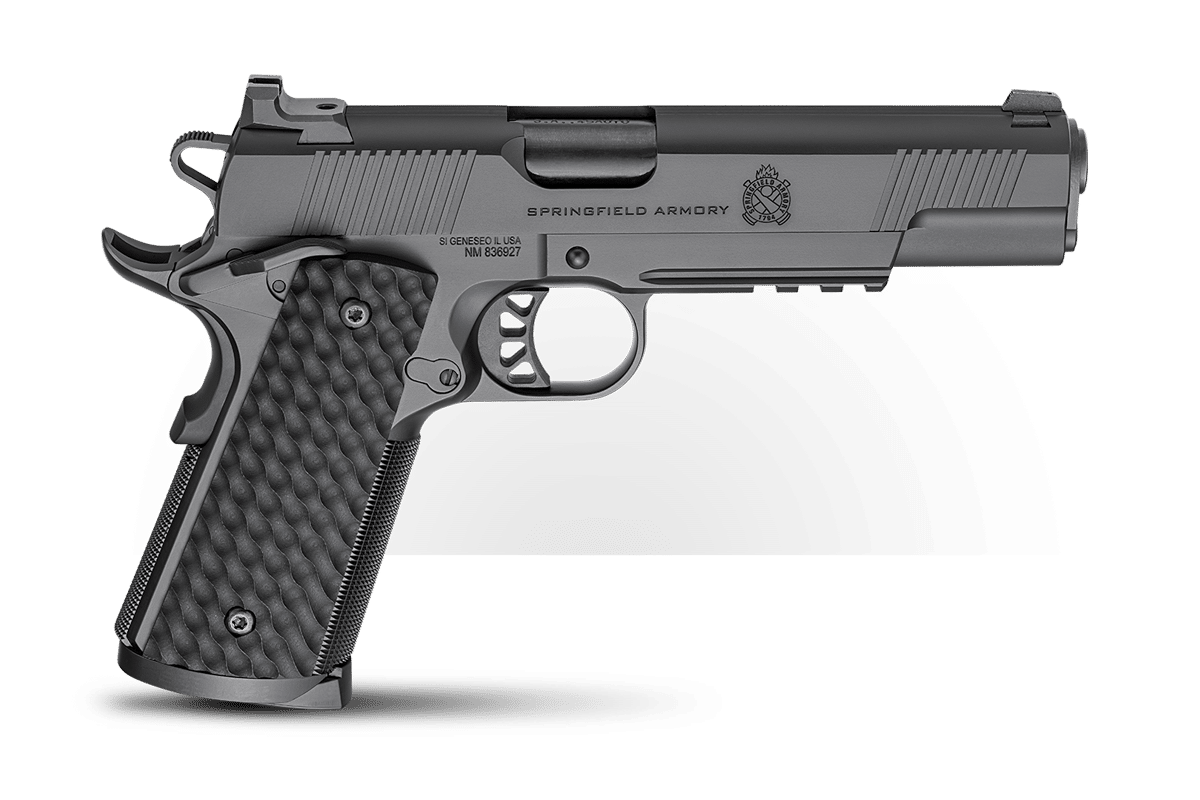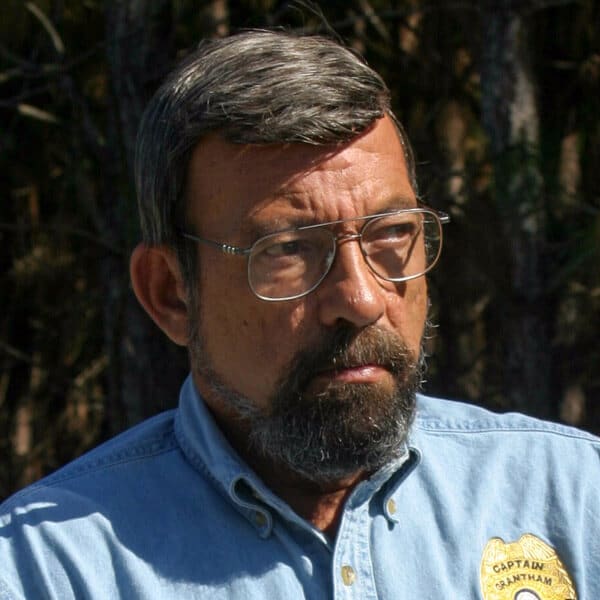Ayoob: Do This to Stress-Test Your Gunfight Survival Skills
April 28th, 2024
7 minute read
Let me start this article by sharing the experience that became an epiphany for me.
The time machine takes us back more than four decades. I am barely into my thirties, a guy who got a running start at firearms training by starting with a .22 rifle at age four, handguns at nine, and carrying loaded and concealed (legally, due to the law in that time and place) at the age of 12 in my father’s jewelry store. Became a published gun writer and police weapons/use of force instructor at age 23. I had been into this so long that I had found myself becoming impatient with the students who “couldn’t seem to get it.”
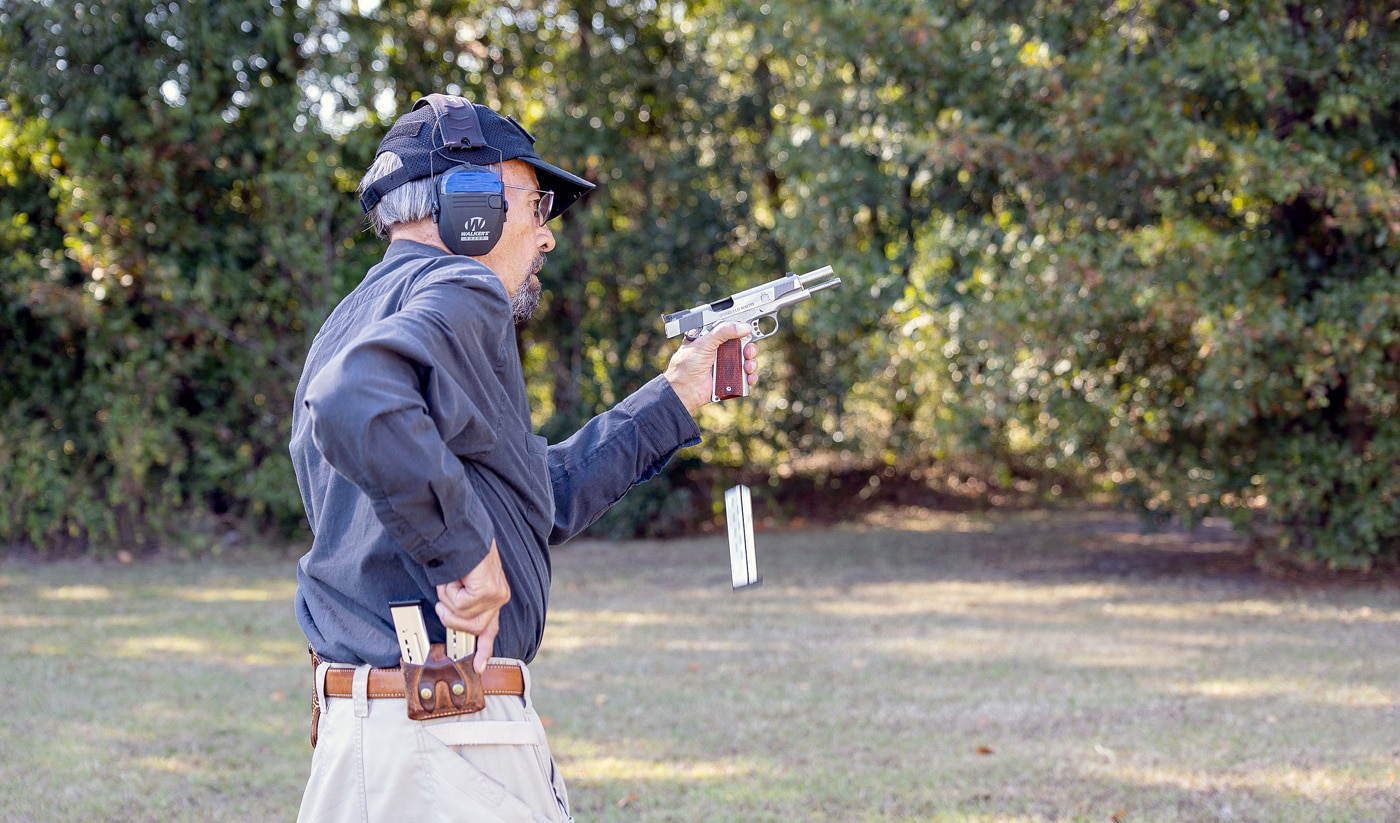
And then, I went to Chapman Academy in Columbia, Missouri to take the Advanced Class taught by Ray Chapman who had become the first world champion of the combat pistol in the mid-1970s … and on the way, experienced a freak accident that left me with a “crushing comminuted fracture of the proximal joint” of my trigger finger.
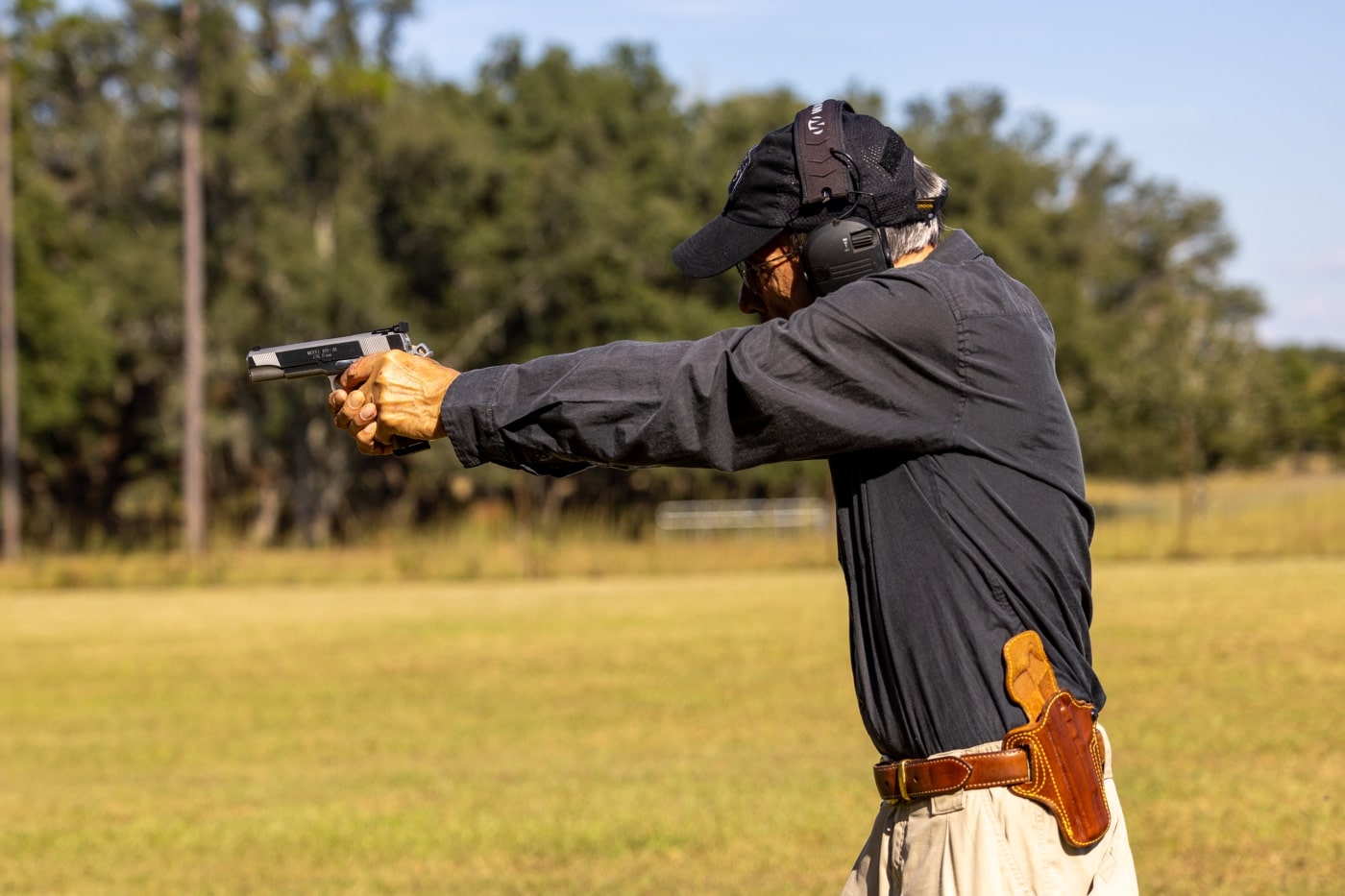
I showed up anyway. I had brought a 1911 .45 Auto for the course, which did not have an ambidextrous safety, and there I was: a right-handed student with “left hand only” to work with, the right hand being in a cast that precluded even reloading and other support hand functions.
I shot the whole damn thing southpaw only, using a .38 Special revolver Ray was kind enough to lend me. There were no left-handed holsters available for it on short notice, so I had the 6”-barreled revolver stuffed in my waistband on the left side. I hadn’t figured out how to load 1911 magazines one-hand only, but I could turn a speedloader upside down, set it in the pooched-out leather of a belt pulled a bit forward from the belt buckle, and refill those.
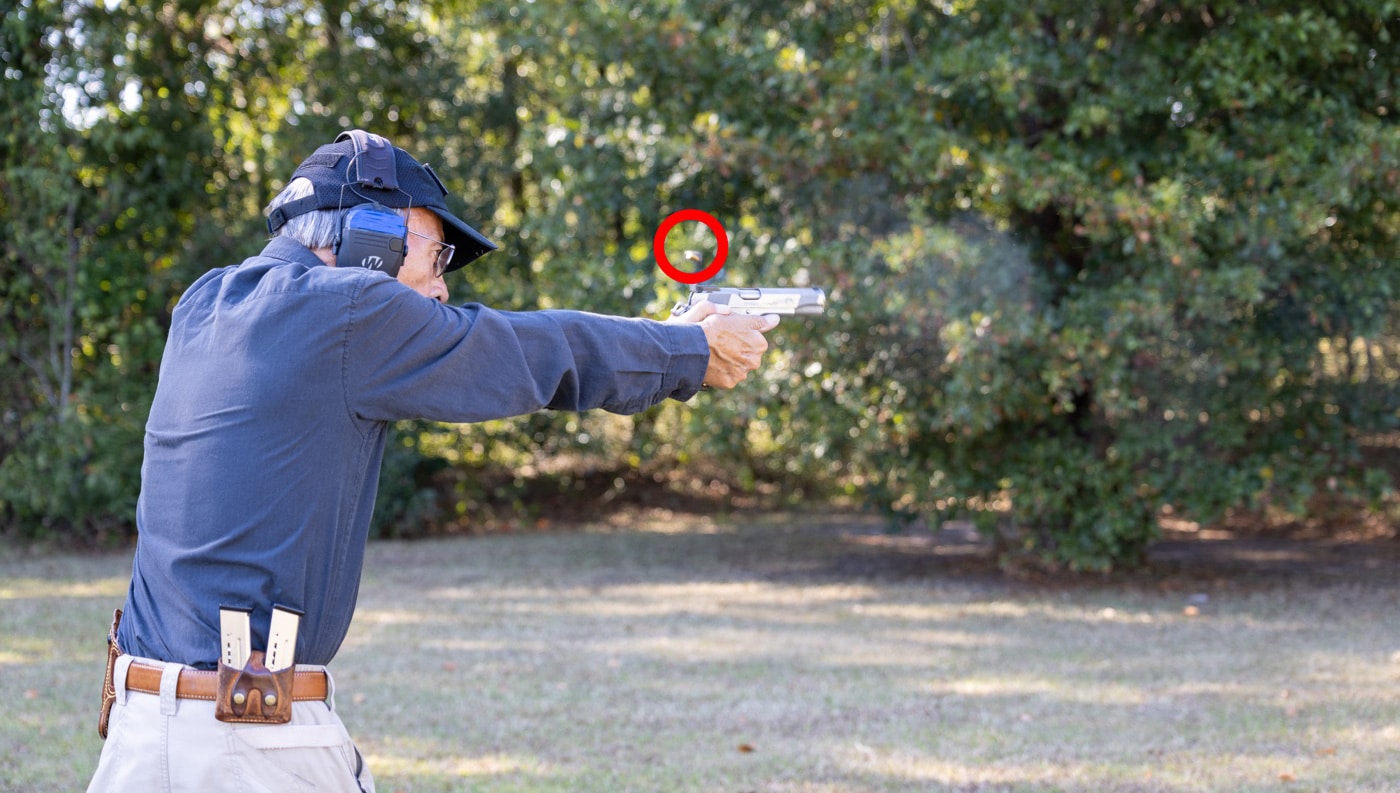
As six months of rehabilitation and healing wore on, the first thing the support hand was able to do was to fulfill its named function and help, at least some, to stabilize the handgun two-handed when I was shooting. I was able to get some left-handed holsters and some M-S Safari parts — ambidextrous thumb safety and slide stop for my .45 auto, what I then called my “orthopedic pistol” when so accoutered — and keep shooting as a “newborn southpaw.”
It was a profound learning experience for me. Here’s why.
Personal Survival Value
If you’ve spent a quarter century handling guns and pulling triggers, that act has become second nature … so much so, that it seems to you that anyone you show how to do it should automatically “get it.” It’s easy to forget your own seminal learning experiences.
Let’s say you want to take care of yourself and your loved ones in life-threatening emergencies. Any smart carrier is going to work on “weak-hand only” shooting (and reloading and malfunction clearing) due to the high percentage of wounded good guys in gunfights taking the hit in their dominant hand or arm.
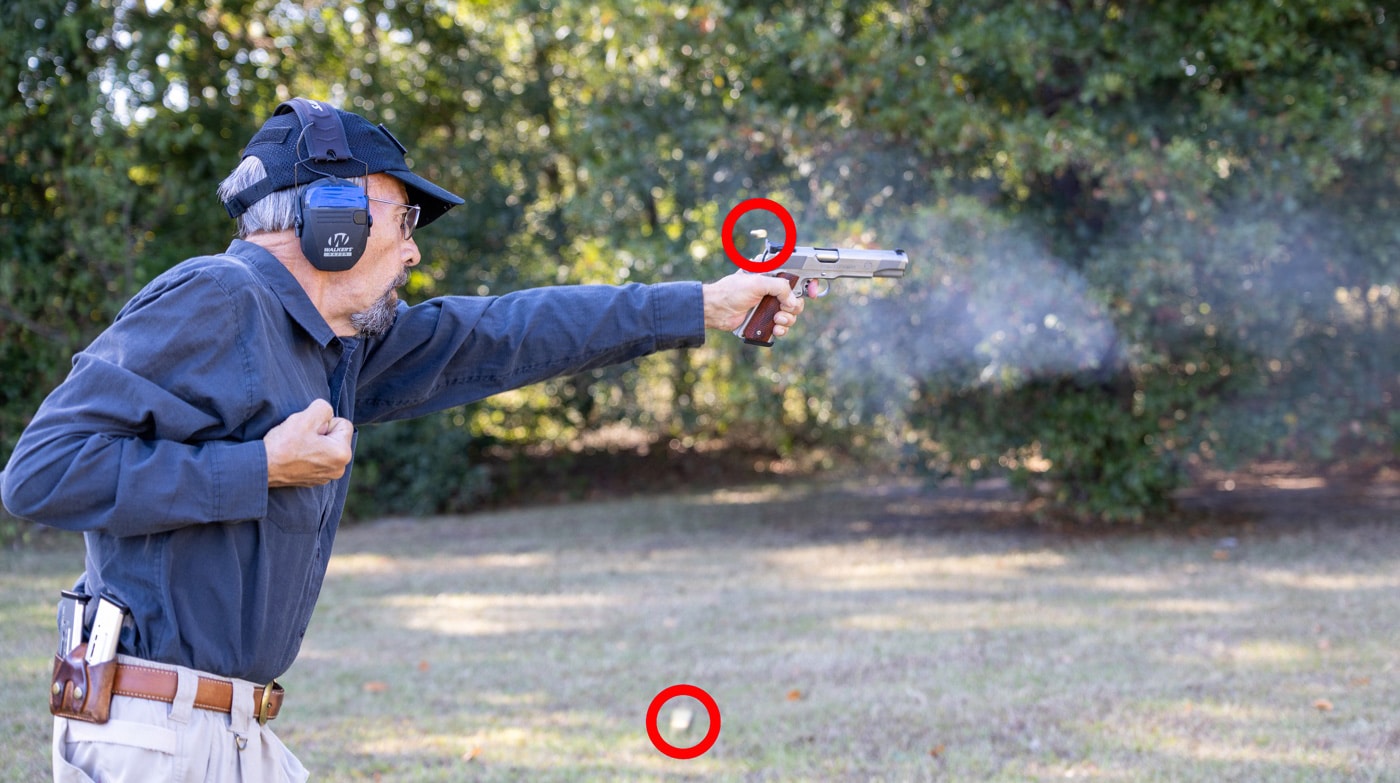
In every shooting class I teach, I make that point (to explain why we do that kind of shooting), and then ask, “Who here has been shot in the gun hand or gun arm in an actual shooting incident, not counting Simunitions™ where that happens a lot?” Rarely does a hand go up. My next point is, “Raise your hand if ever in your life, from finger to collarbone, you’ve sustained an injury that took your dominant upper limb out of action for a while?” More hands than not will go up.
I remind them as I’ll remind you here that the weeks or months of recovery with that hand in a cast or that arm in a sling is a pretty bad time to start thinking about protecting yourself and your family with the one hand you have left. Talk to southpaw friends if you’re not a lefty yourself, and ask them how long it takes them to get the left-handed holster they want, or an ambidextrous safety installed on their 1911. Having a gun and holster that work “for your wrong side” is important beforehand, and most important is experience running the gun with that non-dominant hand.
You’ll generally find, as I did, that the injured dominant hand will be able to handle support functions such as reloading or being the support hand before it will be recovered sufficiently to resume its previous function as your primary gun hand. That’s where mirror image shooting comes into its own.
Teaching Factor
That week of training I had with Ray Chapman at his advanced course with a four-figure round count gave me a much-needed wake-up call. It taught me what it felt like when that gun wasn’t the extension of your hand you had been accustomed to for so long, but instead, this strange and scary thing.
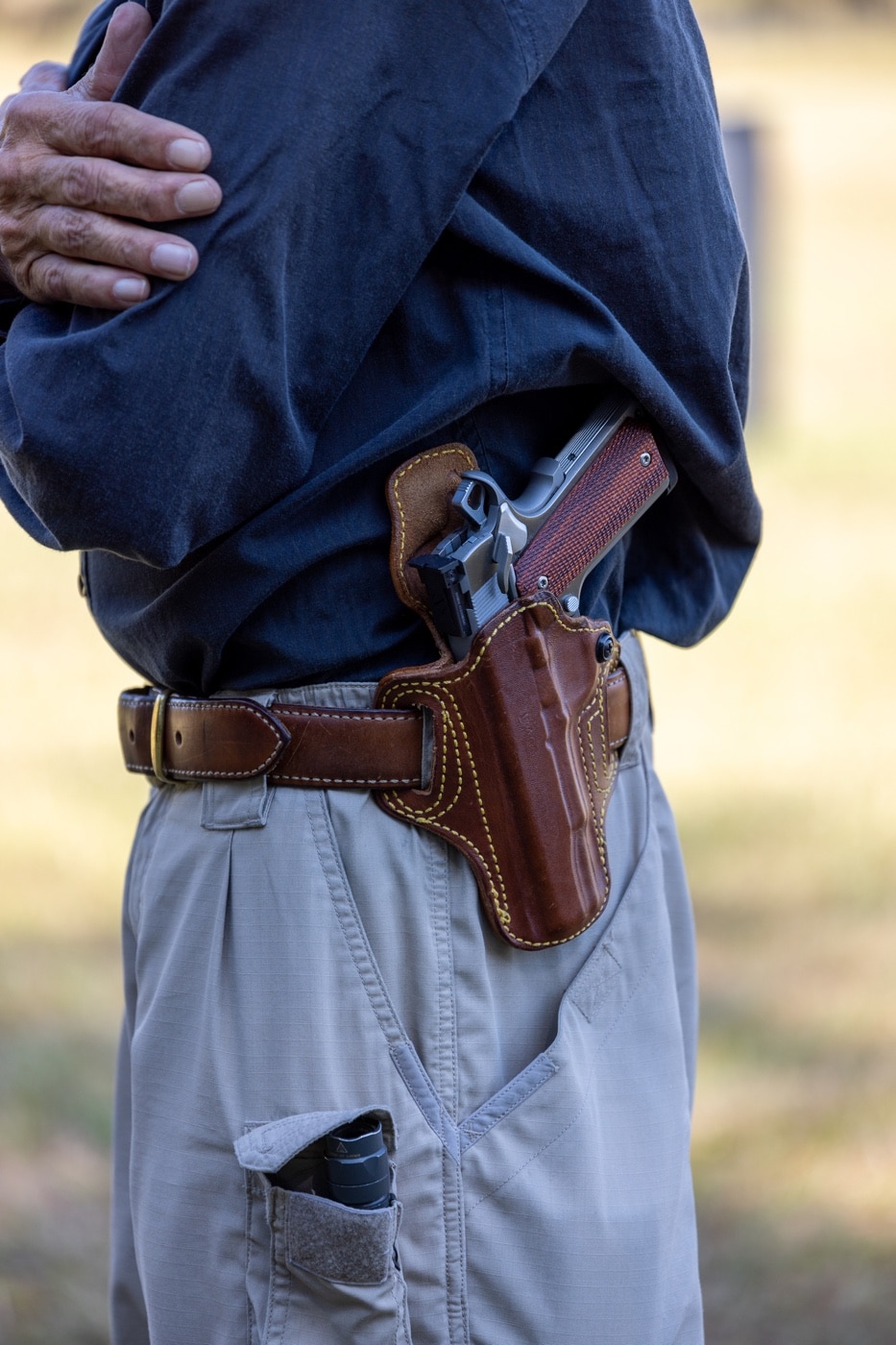
It made me a better, more understanding, and more patient instructor ever since.
Also ever since, when I’ve taught firearms instructor classes, I’ve required the instructor candidates to spend a few hours shooting “mirror image.” It does for them what that early experience did for me: it makes them the student.
Ever since, I’ve asked all my staff instructors to do something I’ve done since then myself: At least once a year teach a class mirror image, maybe even shoot a match mirror image, or at the very least shoot a qualification course in front of their students mirror image.
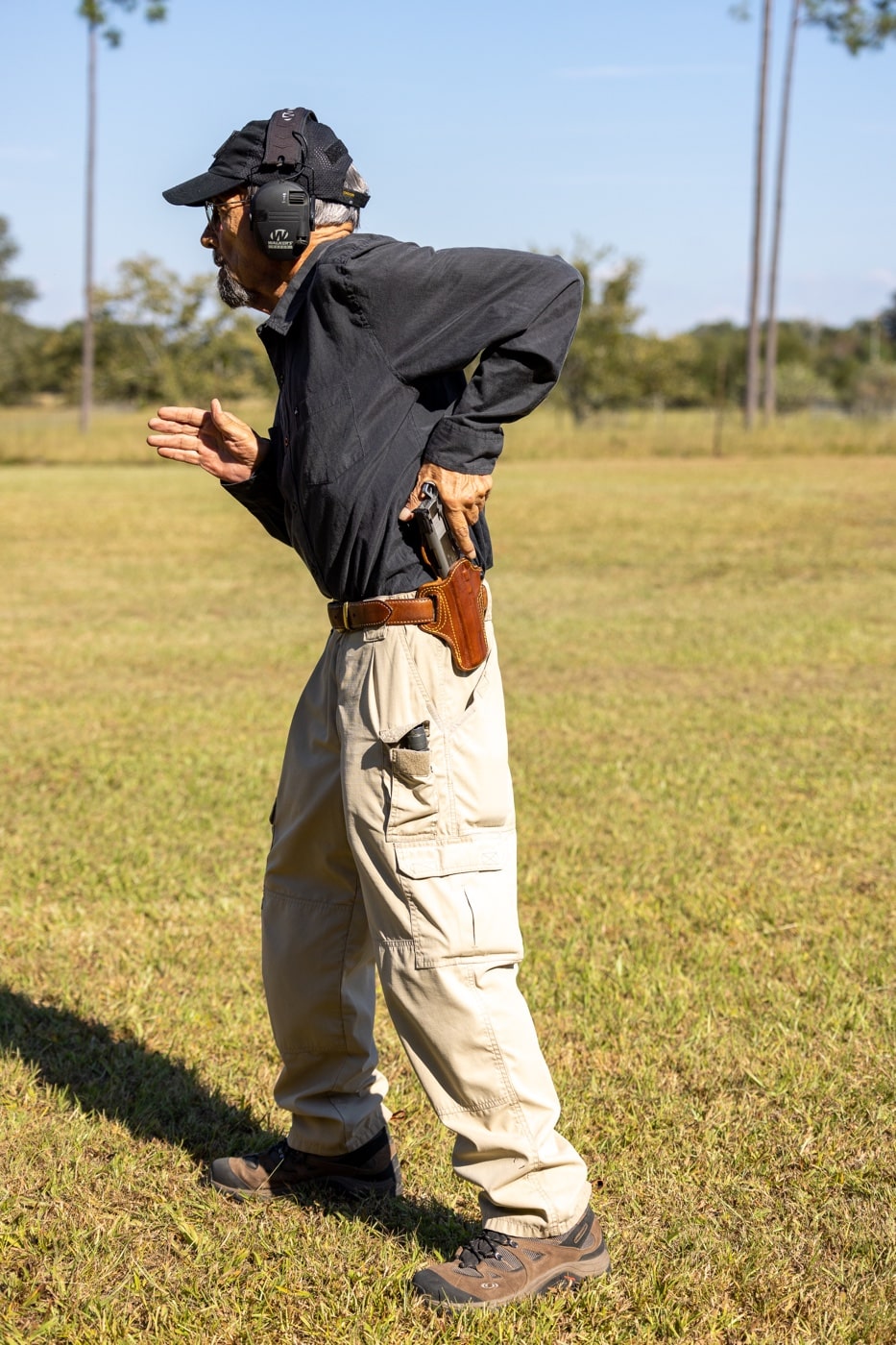
Think about it: If you can’t teach your own non-dominant hand to perform a certain skill set, how in Hell are you ever going to teach another human being that same skill set?
And if you are right-handed, how are you going to teach a left-handed student to run the gun, particularly when certain elements of the techniques have to be modified for left-handed people running guns designed for the right-handed majority? Safety levers…magazine release buttons…cylinder release latches, et cetera.
Learning Curve
Your non-dominant hand will probably learn to become the primary gun hand faster than your dominant hand did the first time around. It’s because you have the cognitive knowledge of accumulated shooting to transfer to that hand. What’s missing is the experience, the reps, or whatever term you want to put on it.
It’s critical to stay focused on Conscious Competence; that is, thinking about what you’re doing instead of trusting the autopilot of Unconscious Competence. Unconscious Competence with the sort of complex psycho-motor skills involved here takes thousands of repetitions, and very few of us have accumulated that many reps with our non-dominant hand.
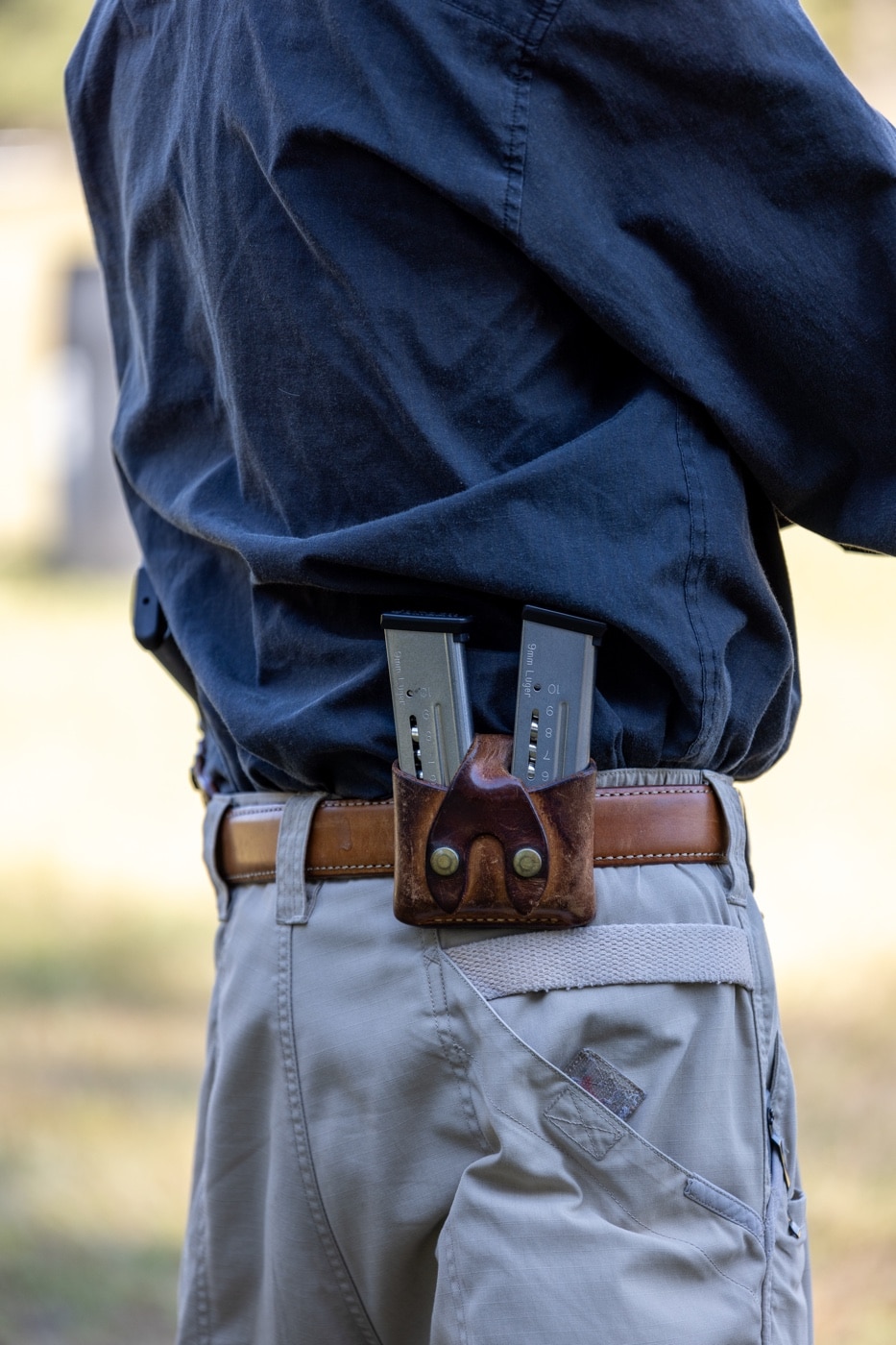
Like any skill, it will take refreshing, too. During the six months I carried and competed before my broken trigger finger healed enough to go back to work, I practiced more than usual with that southern paw. I was surprised to find I won a higher percentage of matches I entered than I had before or since. The only explanation for that which I can think of is that before I had been thinking, “This time I’ll beat Tommy Campbell!” But when I was playing hurt, I had to consciously focus on technique and think “Crush grip! Front sight! Smooth roll on that trigger!”
If you’re not normally cross-dominant, you will be when shooting mirror image. That is, your firing hand will be on the opposite side of your dominant eye. If you can’t switch eyes at will, the best compensation I’ve seen is the Bill McMillan/Ray Chapman technique of rotating the aligned sights 15 to 45 degrees toward the dominant eye. This works particularly well one-handed (and also strengthens the grip slightly: try it and see!) but can also work in a two-hand hold. If you prefer normal sight orientation, bringing your jaw to the gun arm bicep with the gun arm locked out should align left hand with right eye or vice-versa. If you shoot with elbows bent, dropping the head toward the gun-side shoulder should align the opposite eye with the sights.
Give “mirror image” a try. Trust me. It has its benefits.
Editor’s Note: Please be sure to check out The Armory Life Forum, where you can comment about our daily articles, as well as just talk guns and gear. Click the “Go To Forum Thread” link below to jump in and discuss this article and much more.
Join the Discussion
Featured in this article
Continue Reading
Did you enjoy this article?

 672
672




